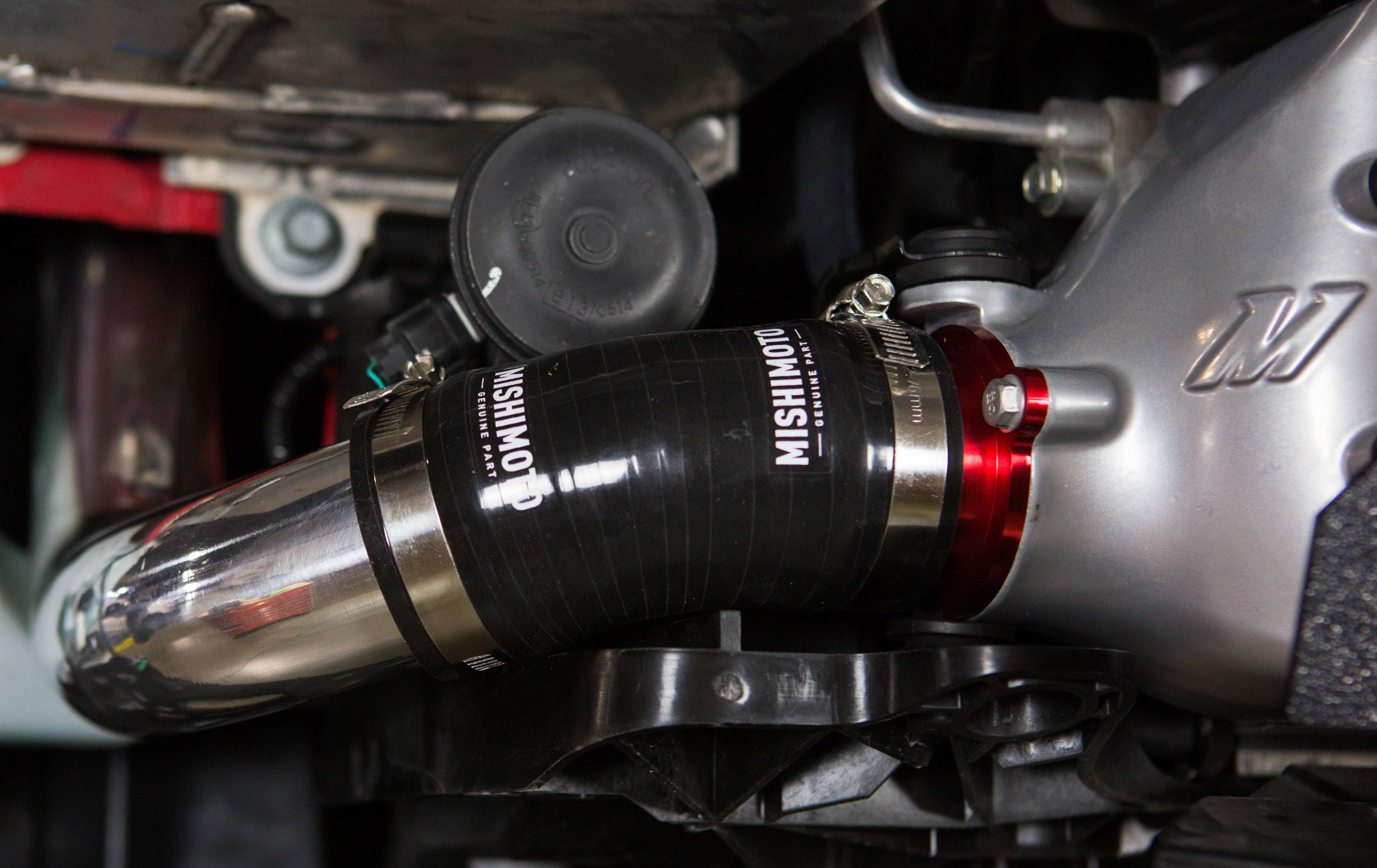
Civilized Pipelines: Intercooler Piping R&D, Part 3: The Fruit of our Labors
This is truly the age of forced induction. A clear indication of the trend came with the release of Honda's 10th generation Civic. After decades of abstaining from giving the intake manifold any extra assistance, we've been delivered a lifetime of naturally aspirated 4 and 6-cylinder engines, which is not necessarily a bad thing. The turbo-less times lead to some truly remarkable engines from the Japanese giant, but enthusiasts craving the extra boost and whine from a turbo or supercharger were left to their own devices.
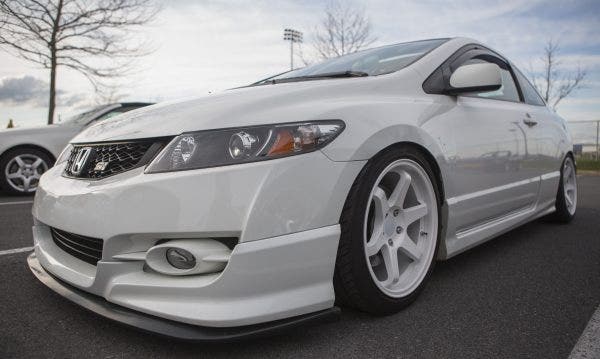
While this might not be a 10th Gen, the 8th Gen is a popular platform for aftermarket forced induction kits. Owner Ian Palmeri wanted to ensure that what was going on under the hood matched the outward appearance of his FG2.
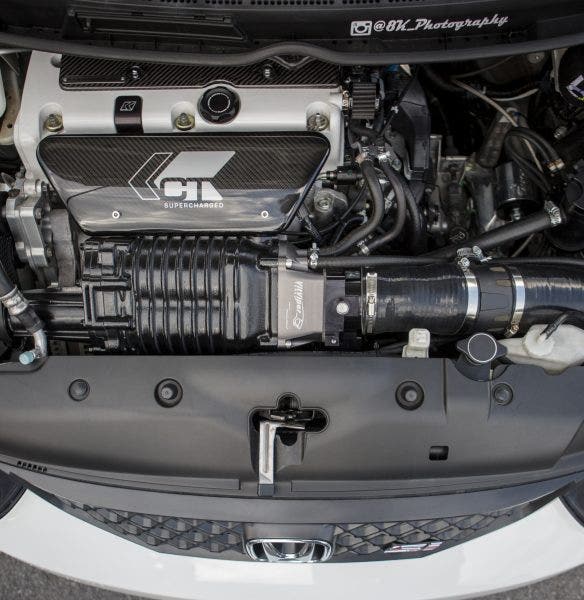
Coupled to the K20 is a 1.1l Eaton-style supercharger, bringing this 8th to well over 350 HP and 250 TQ. The 10th Gen's turbo setup might not come with that much power straight off the lot but the L15B7 does have the potential to reach similar numbers with much less effort from the owner.
Honda turned a new leaf with the new Civic. The days of DIY forced induction projects are over and enthusiasts can roll off the lot with the help of a TD03 turbo. Owners of these new boosted Hondas can make full use of ECU tunes, turning up the workload of the single-scroll turbo, and cramming more boosted air into the cylinders. While this is a quick way to put some extra pep in the Civic's step, these tweaks to the system come with the added side effect of increased heat throughout the intercooling system. Since we've already figured out how to keep the charged air cool, naturally the next step was to upgrade the mode of transportation for that air.
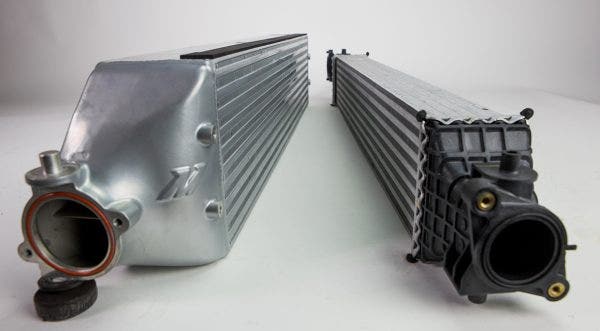
If you recall from our last update, our engineer had already figured out the best way to improve the flow through the piping, and worked with our master fabricator to develop a prototype. Now, we haven't been cutting, scanning, and welding since April, but rather we've finalized our design and received the first sample of the new pipes.
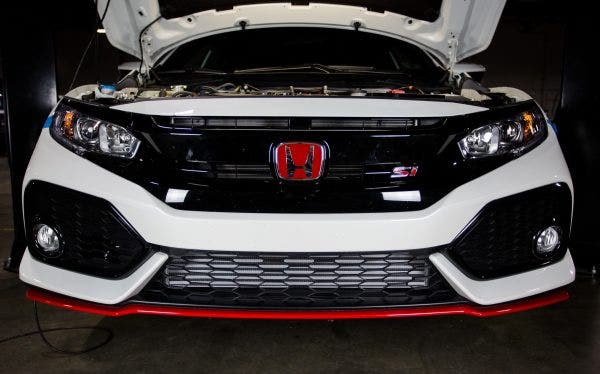
From one Si to the next, you might also recall that we did test fit our intercooler on the most recent iteration of Honda's Spiced up Civic, and since the engine bay is identical, the piping is the same story.
This is typically the part where we break down our kit, cold side vs. hot side. However, for this kit, the pipes work best together. During our development, our engineer determined that there wasn't any clear advantage to installing one side over the other. They operate most efficiently as a complete kit. We also determined that the complete kit wouldn't add much of an advantage when combined with the stock intercooler, so we designed these pipes with our improved bar-and-plate core in mind.
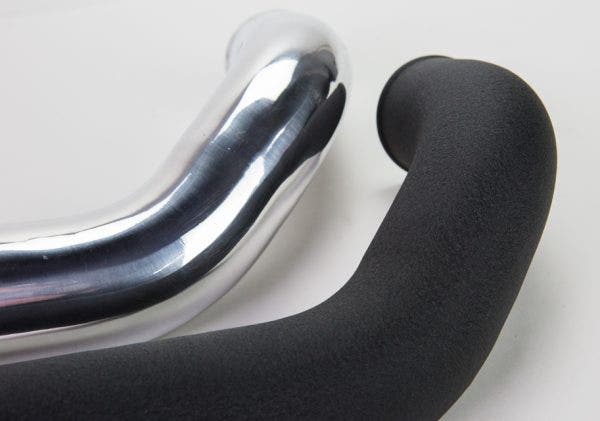
Our new construction ensures both a less restrictive flow of the charged air to and from the Mishi intercooler, and a more durable setup.
The reason for upgrading the intercooler is pretty clear. The larger volume and improved construction allows for much more efficient heat dissipation, and will allow the charged air to pass through much easier, all important characteristics to consider for anyone who does anything more than commuting, especially for those who drive in hotter climates. The same sort of thinking goes into upgrading the piping, especially once the boost starts to get cranked up. The stock piping quickly becomes a restriction since the combination of plastic and rubber weren't designed to handle much over the stock tuning.
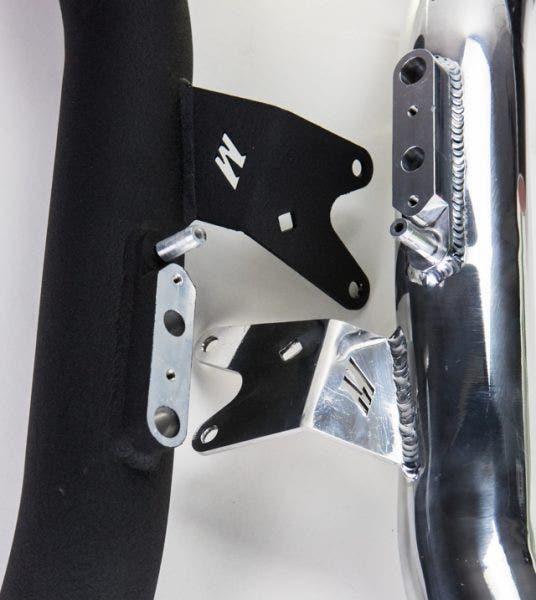
We did a little more than just bump up the size of the pipes. Our engineer, Dan, made sure to add the extra little touches that give the pipes a better performance value, and are aesthetically pleasing.
We started by replacing the flimsy stock construction materials. Plastic and rubber are a god-send when it comes to mass production on the scale that Honda operates, but it can quickly become a weak link as the performance of the car increases. We replaced the plastic lengths of piping with mandrel-bent aluminum, along with increasing the inner diameter from 42 mm to 55 mm, giving these pipes a 30% increase in size over the stock components.
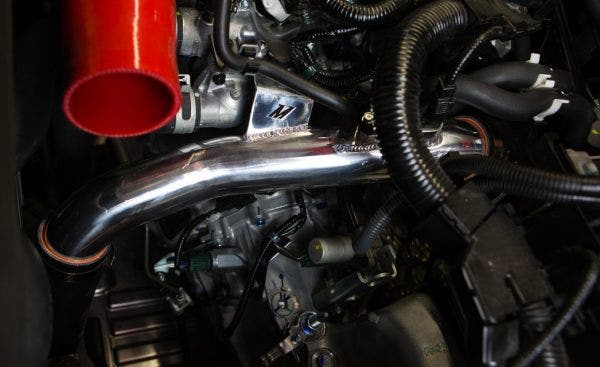
It's no secret that the engine bay in the 10th Gen Civic is pretty drab, to say the least. Our piping kit will add an extra splash of color, no matter if you choose the polished, wrinkle black, or Rallye Red powder-coated finish.
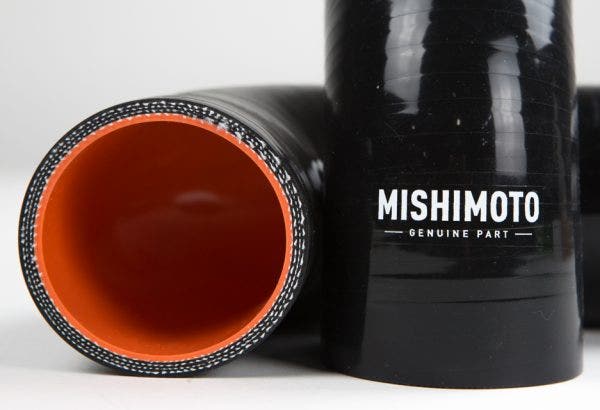
The piping wasn't the only part of the system that received a makeover. The stock rubber couplers were replaced with 5 layers of durable silicone. Our couplers have a few tricks up their sleeves as well. The first is that we've embedded heat resistant fibers within each coupler during the layering process to keep any heat from the engine bay from seeping into your intercooling system. Each piece features reinforced steel wire to make sure that it's shape holds true no matter how much boost is thrown at it.
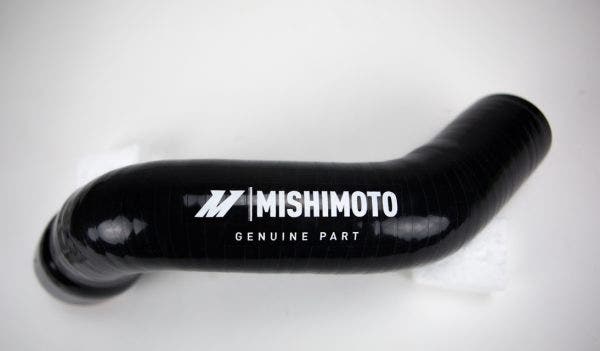
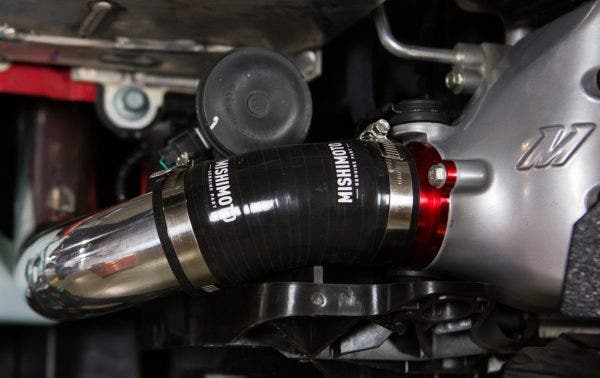
The only quandary that remains is how to attach these new and improved pipes to the intercooler. By now, you should be quite familiar with the bolted flange method Honda used to seal the stock piping to their intercooler. This is not a common practice when it comes to fastening the intercooler pipes to the heat exchanger, so our engineer had to add some extra creativity into the intercooler's design and our piping.
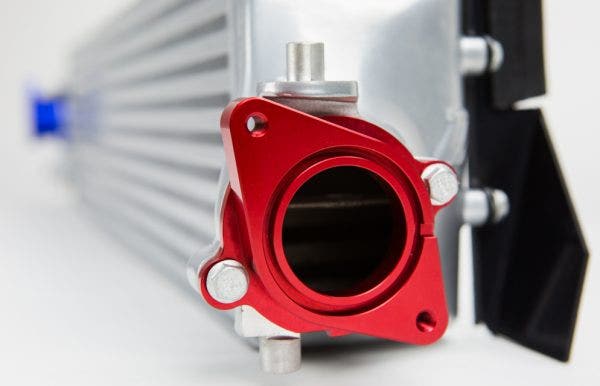
Much like the adapter plates that are included with our intercooler, the piping kit also comes with a pair of specialized adapters that convert Honda's flange-style mount to a method that is better suited for our silicone couplers. These converters are specially designed for their designated side, and as a bonus, the hot-side adapter is visible through the port on the front bumper.
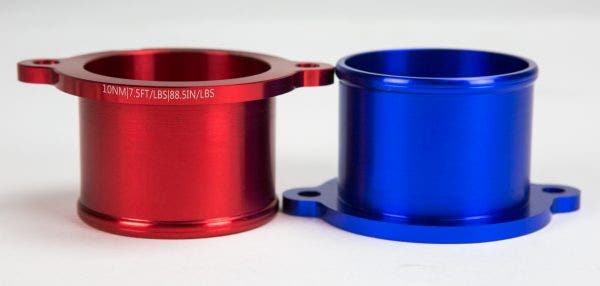
Standard round connections is what we're used to when we design intercooler piping for any vehicle, so naturally that's the shape we converted to.
With the design finalized, and the full kit assembled, it's time to take our loaner Civic Sport Hatch off the lift and the piping out of the photo studio, and then hit the dyno to see what sort of gains we can produce from Honda's first take at a turbocharged engine.
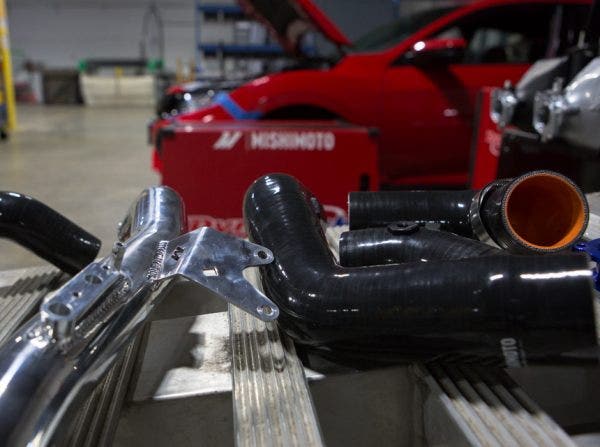
Our piping kit waits in the wings while the stock equipment gets its fair share of testing on the dyno.
Thanks for Reading!
-Nick




